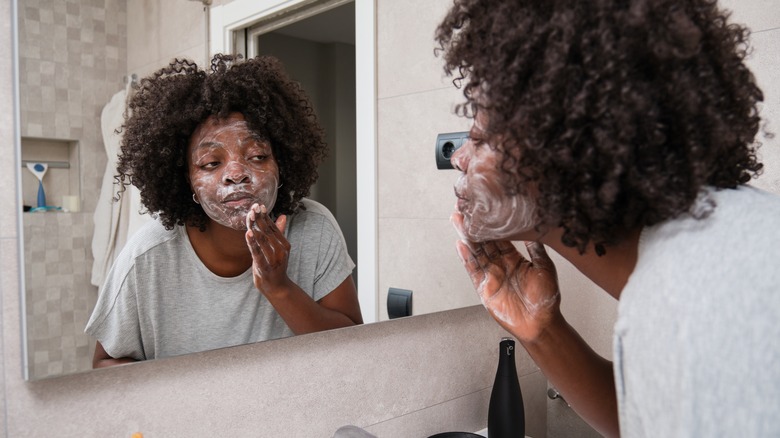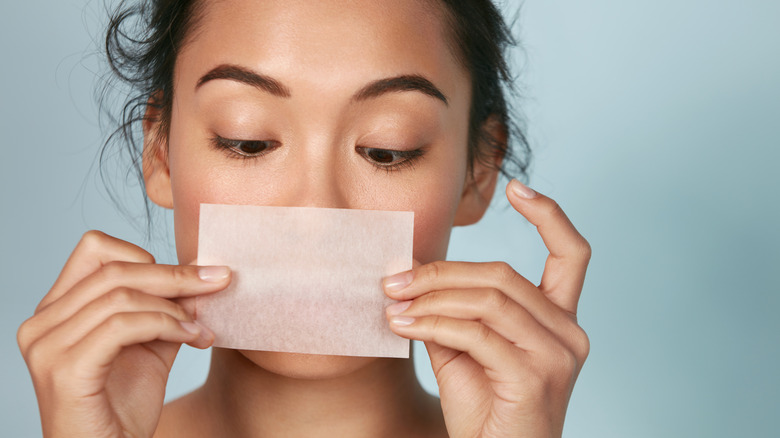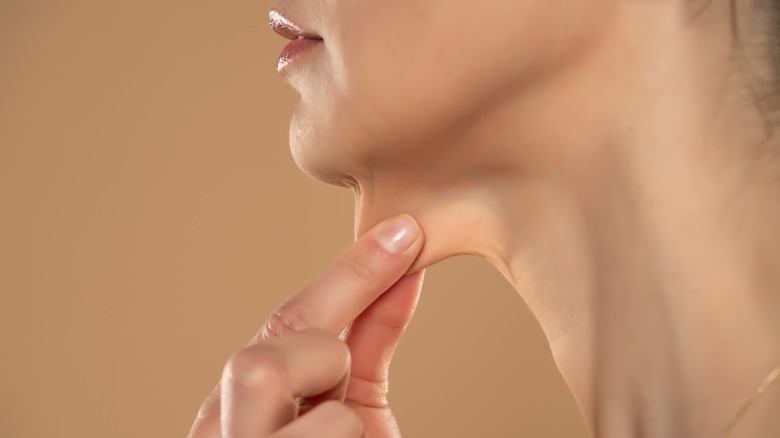Do You Actually Know Your Skin Type? Here Are Practical Ways To Find Out
You can't expect to take good care of your skin if you don't even know what type of skin you have. If you aren't aware of your skin type, you may end up compromising your complexion by applying products or resorting to skincare hacks that may exacerbate existing issues. For instance, if you often use physical exfoliants without knowing that you have dry skin, you may trigger irritation and redness.
According to the American Academy of Dermatology, there are five recognized skin types, namely: dry skin, oily skin, combination skin, normal skin, and sensitive skin. Dry, oily, and combination are already self-explanatory, but normal skin, may not even be a "real" skin type. "I don't really think there is such a thing as 'normal skin,'" Dr. Doris Day, founder of Day Dermatology and Aesthetics, told Today. "I guess if you want to make a category, normal skin is skin that can tolerate most things without overreacting." Meanwhile, sensitive skin is characterized by frequent redness and inflammation and is often easily irritated, either by certain products or fabrics, per Medical News Today. Determining your skin type isn't as hard as it sounds. There are tests that you can try at home, most of which won't cost you a dime.
Try the wash test
One of the quickest ways to figure out your skin type is through a wash test, which involves, well, washing your face. It's recommended that you use a gentle cleanser when you wash, then wait at least an hour to let it dry. While waiting, it's also important to avoid touching your face with your bare hands or applying any additional product.
Once the waiting period is over, grab a tissue and dab it lightly on your skin. Verywell Health notes that if your skin appears unfazed and if the tissue isn't doused in oil, then you likely have normal skin. If the tissue is extra oily and areas like your nose, chin, and forehead are shiny, then it's a sign that you have oily skin. Meanwhile, if you have dry skin, the tissue will barely have anything, and your skin will feel tight and appear red and flaky. And if you have a combination complexion, only your T-zone will be oily, while the rest of your face will remain dry, and possibly flaky, too. As for sensitive skin, you would know if nearly your entire face appears red and dry.
Or the day test
Dr. Melanie Palm, a board-certified dermatologist and cosmetic surgeon, told Healthline that you could try leaving your skin alone for a whole day and then do an assessment at night to see how it fares. For this to work, it would help if you don't put any products throughout the day so your skin would be at its most natural state when you do a self-examination. "The easiest means to determine your skin type is to see how it performs from morning to evening on a typical day," Dr. Palm noted.
At the end of the day, stand in front of the mirror and do a thorough assessment of how your skin looks. You have oily skin if you appear too greasy, but if the oil is contained in your T-zone, with the rest of your face remaining dry, then you have combination skin. If your face feels tight and taut, then you have dry skin. If you have red blotches here and there, you likely have sensitive skin. And lastly, if it doesn't look like your face changed the entire day, then you've won the genetic lottery and likely have normal skin.
The blotting method may also work
Out of all the skin type tests, the blotting test may seem the most familiar because it has been bandied about by experts and magazines alike for as long as we can remember. The idea behind it is simple, really. Grab a few pieces of blotting paper and press them to your skin to check how they will absorb oil. Your face must be bare when you do this, with zero traces of makeup and skincare products. You'll also get more accurate results if you do it mid-day when you've been up for a few hours, and your skin is more "settled."
After blotting the skin, performing a quick inspection of the papers will inform you of your skin type. Hold them up under the light, and per CeraVe, if the sheets are saturated with oil, then you likely have oily skin. If you only collected oil from your T-zone area, then you have combination skin. If there's barely any oil, or perhaps even none at all, then you have dry skin. And if most areas of your face produced only a small amount of oil, you have normal skin.
The pressure or pinch test, too
The pressure test is more about testing your skin's elasticity, but it can also help in giving you an idea of what your skin type is. "This is known as the 'skin pinch' or skin turgor test," Dr. Karan Rangarajan, a surgical doctor, explained in a TikTok video. "The more hydrated you are, the more elastic your skin will be and it will bounce back immediately after pinching it. If you're dehydrated the skin loses its elasticity and it takes a while to return to normal, and it's more likely to tent up."
In terms of determining your skin type, the Derm Collective noted that after applying pressure to your skin and noticing that it doesn't bounce back as quickly as it should, then it may be a sign that it's dry. But if it does the opposite and it's extra bouncy, your skin may be categorized as either normal, oily, or perhaps even combination. You can do this in conjunction with the other tests to better determine your skin type.
If you're still confused, consult a dermatologist
If you're still having a hard time figuring out your skin type with the aforementioned methods, you can always book an appointment with your dermatologist to have a proper assessment. Dr. Melanie Palm shared with Healthline that dermatologists usually have mechanisms in place to do an exhaustive examination of your skin's texture, behavior, sebum production, and more. "Vascular filters can zero in on excess or unhealthy blood vessel distribution — indicating sensitive, irritated, or rosacea-prone skin," she said. "UV-like filters can demonstrate sun damage and pigmentation."
When you know your skin, the better you'll be able to look after it and respond to what it needs. But it's also worth noting that your skin type may change, so it's important that you pay close attention and check how it reacts to products, weather, environment, and other outside factors. Hormonal changes can play a part, too. If you find that your skin is changing, you need to take action accordingly. "If your skin type changes, it's time to explore and learn what products and treatment works best for your skin as it goes through the transition," Dr. Michele Green, a board-certified dermatologist, told Byrdie.





